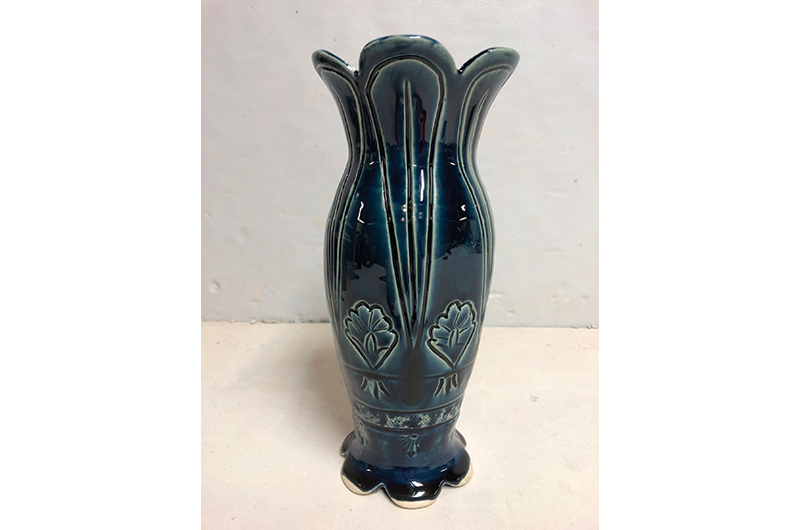Amy Nevin has two passions in life: ceramics and cooking. Both, she said, go hand in hand. What she creates in her Vineyard Haven home studio might end up as an element at a private dinner party she is catering – a serving bowl filled with Island-grown veggies, a platter featuring freshly caught fish. The piece at left, titled Tulip Vase, could serve as a centerpiece when filled with freshly cut blooms.
Growing up in New Jersey, Nevin always enjoyed art. But it wasn’t until she was living on St. Thomas, where she took pottery classes, that she fell in love with the art of clay. She went on to receive a BFA from the Kansas City Art Institute, an MFA from the Rhode Island School of Design, and completed an artist in residence program at the Anderson Ranch Arts Center in Colorado. Seventeen years ago, she moved to the Island to establish her private catering and ceramics businesses.
At her home studio, complete with a slab roller, potter’s wheel, and kiln, she is able to create whenever she wants. For Tulip Vase, Nevin was inspired by art nouveau pottery: “The natural forms and curves of plants and flowers – that movement, that was my inspiration.”
But Nevin doesn’t set out to create just one piece; she makes numerous pieces in succession. “Timing is everything,” she said. After throwing, say, a dozen vases, she leaves them out to dry. “Then, as they are drying, I trim the foot. And as they dry a little more, I decorate and carve while they are at the leather-hard stage.”
From there, the pieces go into her kiln for the bisque-firing stage, “which basically kind of soaks up all of the water.” Next, they are signed, waxed, and glazed, using a blend she creates herself. For Tulip Vase, Nevin utilized a new glaze she formulated that pools in carved lines. “Even though the piece only has one glaze on it, it becomes darker and creates contrast in the embellishment and enhances the texture.”
For the final step, all of the pieces are returned to the kiln, where they are fired up to 2,300 degrees. “It is quite the process,” Nevin said with an easy laugh. “It’s not instant gratification, for sure.”





